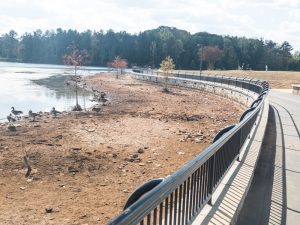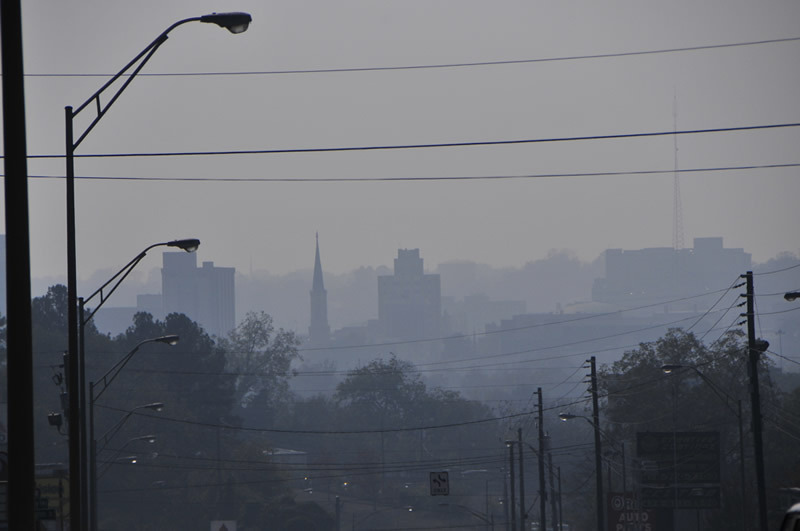By Elliott Brack, editor and publisher | Having lived almost all of my life in Georgia, except for a three-year stint in Germany and a year in Iowa at graduate school, this week many of us experienced something unusual — something that had never happen to me before.
 Here in Gwinnett, for the first time I smelled the smoke of North Georgia forest fires.
Here in Gwinnett, for the first time I smelled the smoke of North Georgia forest fires.
That struck me as significant. First of all, it shows the massiveness of the fires, and what they bring…..smoke (through wind) to about all of North Georgia. The smoke from the mountain fires was also noticed as far south as Macon! That’s virtually half a state being impacted in some way by those uncontrollable fires in this dry weather. And more than 25,000 acres have been under fire! That’s massive for us in the Southeast!
Secondly, it emphasizes just how dry it is, not only in the mountains of Georgia, but in many parts of the state. We understand even in areas where firefighters have halted the fire, that nature’s dropping of leaves touching the hot ground re-starts the fires. About the only area not experiencing massive drought in Georgia is the eastern section, along the coast.
And third, the smoke emanating from the mountain fires is something that Georgians have never had happen in most of its citizens’ memory. That may be normal in the Western states. But this far south? That’s unusual. After all, generally we live in a state which is green, and where routine rainfall is expected in normal years every month. In Atlanta, the average driest month in recent years has been October (3.11 inches), while the wettest month is March (5.38 inches. Source: Weather.com.)
Depending on where you are in Georgia, the average rainfall can vary from 45-55 inches of rain per year. The average for the state is 49.74 inches.

Roving Photographer Frank Sharp give you an idea of how strong the drought is in Gwinnett with this photograph from Rhodes Jordan Park. He says: “What used to be water was all the way to the wall but now is shoreline. The bald cypress planted last year are suffering.”
What this means is that we live in an area which is relatively verdant and flourishing most of the years, with well-watered greenery. We’re not used to having periods of extreme drought, and really, can’t get used to it. In our neighborhood, we have not had a rain at all since September 17. That’s two months ago! And yes, the ground is beginning to crack, and many of our yard’s plants and trees are really suffering from lack of water.
On another front, we haven’t had to mow what little grass we have much this year. Far as that goes, many lawns are looking pretty bad, many mostly weedy. Why is it the weeds grown quite well even in a drought, when the grass itself seems to die away? At least we are saving on mowing.
And these days, if you are into leaf-blowing, it’s mighty easy with dry leaves, compared to damp or soggy leaves.
We’re trying to conserve our water usage. After all, if you have a regular water meter, Gwinnett County impacts you with heavy consumption, for you have not only to pay for the water, but there can be sewer charges based on your consumption. So, you are hit two ways.
Speaking most hopefully, about all we in the Southeast can do now is pray for rain. That will not only help quench the mountain fires, but the rain can brighten our spirits. It’s great to sit on your porch and listen to a steady rain. Oh, for the day! That’s far better than smelling smoke.
FIRE FACTS: These North Georgia mountain fires are continuing to spread. A report from the Chattahoochee-Oconee National Forest Service on Thursday morning found 336 people fighting the Rock Mountain fire, which had burned 8,545 acres. Engaged in the fire-fighting were 11 crews; 10 engines; one bulldozer; two water tenders; five helicopters and one fixed-wing airplane. That indicates the scope of the work ahead, since this fire is only 20 percent contained.
- Have a comment? Send to: elliott@brack.net










Follow Us